Related Research Articles
Lecharrownahone is a townland in the civil parish of Templeport, County Cavan, Ireland. It lies in the Roman Catholic parish of Templeport and barony of Tullyhaw.
Kilsallagh is a townland in the civil parish of Templeport, County Cavan, Ireland. It lies in the Roman Catholic parish of Templeport and barony of Tullyhaw.
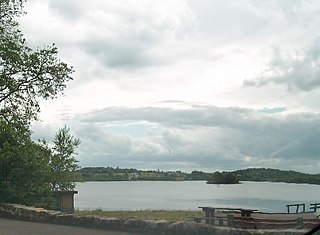
Brackley is a townland in the civil parish of Templeport, County Cavan, Ireland. It lies in the Roman Catholic parish of Templeport and barony of Tullyhaw.
Gortnavreeghan is a townland in the civil parish of Templeport, County Cavan, Ireland. It lies in the Roman Catholic parish of Templeport and barony of Tullyhaw.
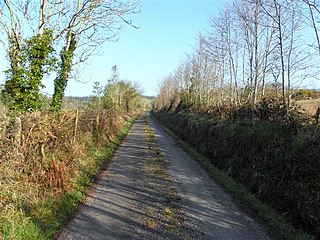
Killycrin is a townland in the civil parish of Templeport, County Cavan, Ireland. It lies in the Roman Catholic parish of Templeport and barony of Tullyhaw.
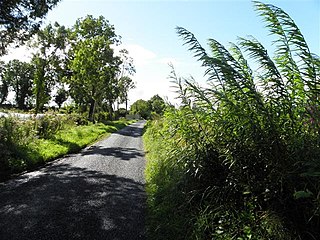
Gortmore is a townland in the civil parish of Templeport, County Cavan, Ireland. It lies in the Roman Catholic parish of Templeport and barony of Tullyhaw.

Ballynamaddoo is a townland in the civil parish of Templeport, County Cavan, Ireland. It lies in the Roman Catholic parish of Templeport and barony of Tullyhaw.
Mullaghlea is a townland in the civil parish of Templeport, County Cavan, Ireland. It lies in the Roman Catholic parish of Templeport and barony of Tullyhaw.

Killyneary is a townland in the civil parish of Templeport, County Cavan, Ireland. It lies in the Roman Catholic parish of Templeport and barony of Tullyhaw.
Newtown is a townland in the civil parish of Templeport, County Cavan, Ireland. It lies in the Roman Catholic parish of Templeport and barony of Tullyhaw.

Arderry is a townland in the civil parish of Templeport, County Cavan, Ireland. It lies in the Roman Catholic parish of Corlough and barony of Tullyhaw.
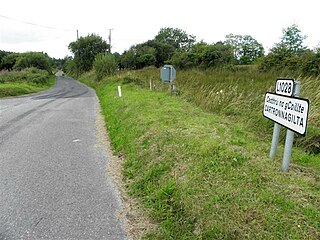
Cartronnagilta is a townland in the civil parish of Templeport, County Cavan, Ireland. It lies in the Roman Catholic parish of Corlough and barony of Tullyhaw. The local pronunciation is Carthoonnaghilta.
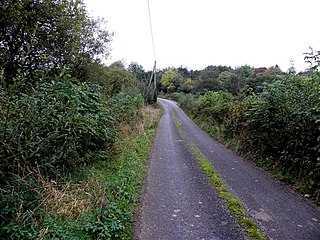
Corrachomera is a townland in the civil parish of Templeport, County Cavan, Ireland. It lies in the Roman Catholic parish of Corlough and barony of Tullyhaw. The local pronunciation is Currach-Humra.
Derryconnessy is a townland in the civil parish of Templeport, County Cavan, Ireland. It lies in the Roman Catholic parish of Corlough and barony of Tullyhaw.
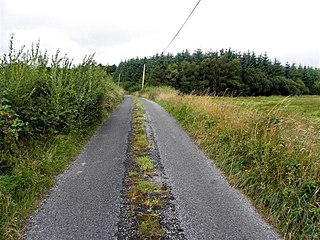
Tullytrasna is a townland in the civil parish of Templeport, County Cavan, Ireland. It lies in the Roman Catholic parish of Corlough and barony of Tullyhaw.

Tonlegee is a townland in the civil parish of Templeport, County Cavan, Ireland. It lies in the Roman Catholic parish of Corlough and barony of Tullyhaw. The townland was also called Clonmeoun, probably an Anglicisation of the Gaelic 'Cluain Mín' meaning The Smooth Meadow.

Tawnagh is a townland in the civil parish of Templeport, County Cavan, Ireland. It lies in the Roman Catholic parish of Corlough and barony of Tullyhaw.
Muineal is a townland in the civil parish of Templeport, County Cavan, Ireland. It lies in the Roman Catholic parish of Corlough and barony of Tullyhaw.
Moneynure is a townland in the civil parish of Templeport, County Cavan, Ireland. It lies in the Roman Catholic parish of Corlough and barony of Tullyhaw.

Gortnacargy is a townland in the civil parish of Templeport, County Cavan, Ireland. It lies in the Roman Catholic parish of Corlough and barony of Tullyhaw.
References
- ↑ "IreAtlas" . Retrieved 29 February 2012.
- ↑ "4.25. The Baronie of Tollagh Aghe".
- ↑ National Archives Dublin
- ↑ Trinity College Dublin: The Down Survey of Ireland.
- ↑ "Down Survey Maps | the Down Survey Project".
- ↑ "The ... report of the Deputy Keeper of the Public Records in Ireland / presented to both houses of the Parliament by command of Her Majesty". Dublin : Printed by Alexander Thom for Her Majesty's Stationary Offic. 23 September 1882 – via Internet Archive.
- ↑ Chancery, Ireland (11 April 1800). "Calendar of the Patent Rolls of the Chancery of Ireland". A. Thom – via Google Books.
- ↑ The Hearth Money Rolls for the Baronies of Tullyhunco and Tullyhaw, County Cavan, edited by Rev. Francis J. McKiernan, in Breifne Journal. Vol. I, No. 3 (1960), pp. 247-263
- ↑ Bewley, Edmund Thomas. The origin and early history of the family of Po? or Poe. Рипол Классик. ISBN 9785871253793 – via Google Books.
- ↑ "List of Baronies" (PDF). www.cavanlibrary.ie. Retrieved 22 September 2019.
- ↑ "The Tithe Applotment Books, 1823-37". titheapplotmentbooks.nationalarchives.ie.
- ↑ "Templeport Registered to keep Arms". www.bawnboy.com.
- ↑ "Census Data" (PDF). census.nationalarchives.ie. Retrieved 20 November 2019.
- ↑ "Valuation Office Books". census.nationalarchives.ie.
- 1 2 Commons, Great Britain Parliament House of (23 September 1853). "Accounts and Papers of the House of Commons". Ordered to be printed – via Google Books.
- ↑ "Griffith's Valuation". www.askaboutireland.ie.
- ↑ The census of Ireland for the year 1861. Presented ... pt.1:v.3. - Full View | HathiTrust Digital Library | HathiTrust Digital Library. Babel.hathitrust.org. 21 November 2018. Retrieved 23 September 2019.
- ↑ "Census of Ireland 1871 : Part I, Area, Population, and Number of Houses; Occupations, Religion and Education volume III, Province of Ulster; Summary Tables, Indexes" (PDF). 1874. Retrieved 23 September 2019.
- ↑ "Census of Ireland 1881 : Area, Population and Number of Houses; Occupations, Religion and Education volume III, Province of Ulster". HMSO. 23 September 1882 – via Internet Archive.
- ↑ "HISTPOP.ORG -". www.histpop.org.
- ↑ "National Archives: Census of Ireland 1911". www.census.nationalarchives.ie.
- ↑ "National Archives: Census of Ireland 1911". www.census.nationalarchives.ie.
- ↑ Site number 364 in "Archaeological Inventory of County Cavan", Patrick O’Donovan, 1995, where it is described as- Raised circular area (int. diam. 24.9m) enclosed by an earthen bank and a fosse which is well preserved from N-ENE, and infilled or incorporated into the field boundary elsewhere. Bank absent from SSE-SSW and incorporated into the field boundary from SSW-NNW. Break in bank at E may represent original entrance.
